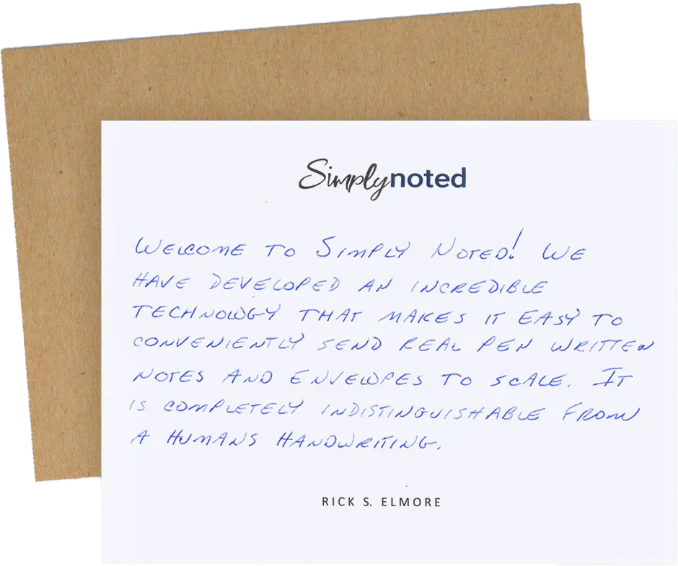Best 9 Omnichannel Marketing Ideas

Omnichannel Marketing Ideas: 9 of the Very Best
There’s no question that omnichannel marketing is one of the most effective ways to connect with customers and drive sales. After all, it takes into account the fact that people don’t just shop online or in-store – they move seamlessly between both (and often at the same time).
So, what exactly is omnichannel marketing? Omnichannel marketing refers to a joined-up approach to marketing that considers all the different ways customers interact with your brand. This could be through your website, social media, email, in-store, or even over the phone.
The key to successful omnichannel marketing is providing a consistent experience for customers no matter how they choose to engage with you. This means creating a joined-up strategy that covers all your different channels and touchpoints.
But with so many different channels to choose from, it can be hard to know where to start. And even once you’ve chosen your channels, how do you make sure your messages are consistent across all of them?
Below you'll find 9 of the very best omnichannel marketing ideas to help get you started. But first, a few thoughts on how to get the most out of an integrated, omnichannel campaign.

TIPS FOR GETTING THE MOST OUT OF YOUR OMNICHANNEL MARKETING STRATEGY
When it comes to omnichannel marketing, the key is to start small and gradually build up your presence across different channels. Trying to be everywhere at once is not only overwhelming, but it’s also likely to lead to inconsistency – which is one of the biggest turn-offs for customers. That's why the first thing you should do is come up with an ambitious but achievable plan.
Start With a Plan
Without a clear plan, it’s easy to get scattered and end up using too many channels or not enough. Start by sitting down and mapping out your goals, target audience, and budget. This will help you focus your efforts and make sure you’re using the right channels for your business.
Define Your Channels
Once you know your goals, it’s time to start thinking about which channels will work best for reaching them. There are a lot of options out there, so take some time to research which ones make the most sense for your business. You may want to consider using a mix of online and offline channels, such as social media, email, print ads, and events.
Create Consistent Messaging
One of the most important aspects of omnichannel marketing is making sure your messages are consistent across all channels. This means using the same branding, tone, and messaging throughout. It can be helpful to create a style guide to reference when creating new content.

Use Data to Inform Your Decisions
Data is one of your most powerful tools when it comes to omnichannel marketing. Use it to track which channels are driving the most traffic and sales, and then adjust your strategy accordingly. You can also use data to segment your audience and personalize your messages for each group.
Automate Where Possible
Once you have your omnichannel marketing strategy up and running, it’s important to automate as much of it as possible. This will help you save time and ensure that your messages are always consistent. There are a number of marketing automation platforms out there that can help with this.
Test, Test, Test
As with any marketing strategy, it’s important to test your omnichannel campaigns before rolling them out to your entire audience. This will help you identify any potential problems and make sure everything is working as it should. Try running a small test campaign with a segment of your audience first, and then make adjustments as needed.
Personalize Your Messages
In today’s competitive market, it’s more important than ever to personalize your marketing messages. This means tailoring them to the specific needs and interests of your target audience. You can use data to segment your audience and then create messages that are relevant to each group.

Make it Easy to Buy
One of the main goals of omnichannel marketing is to make it easy for customers to buy from you, no matter which channel they’re using. This means having a consistent checkout process and making sure your payment methods are compatible with all of your channels. You should also offer customer support across all channels in case they have any questions or problems.
Use Technology to Your Advantage
There are a number of different technologies you can use to power your omnichannel marketing campaigns, such as marketing automation platforms, CRM software, and data analytics tools. Use these tools to automate your campaigns, track your results, and make sure your messages are always consistent.
9 Omnichannel Marketing Ideas to Drive Results
The following omnichannel marketing strategies will turbo drive your marketing efforts and brand loyalty. Learn how to improve your customer experience with the following 9 tactics.
Synchonize Your Channels
The goal of omnichannel marketing strategy is to create a seamless user experience. That means that potential customers should see the same messaging no matter where they encounter your brand.
Marketers often assume that omnichannel means "operating using multiple channels" but that's not the entire story. That is a description of multichannel marketing, which use many platforms but doesn't necessarily control the message across all of them. Omnichannel marketing strategy attempts to unify multiple channels into a seamless experience that follows prospects across their customer journey. This unified customer experience means that you're able to control your message no matter how prospects find you.
This step can't be stressed enough. The perfect omnichannel marketing strategy must bridge across multiple platforms and different media, and yet still feel like a unified message. This takes time, patience, and a critical eye for detail.

Utilize the Emotional Power of Handwritten Direct Mail
Modern marketers often favor a digital omnichannel approach, throwing all their eggs into online channels while ignoring tried and true physical channels. But smart marketing teams know that no omnichannel experience is complete without handwritten direct mail. Handwriting can elevate a relevant message and create a lasting emotional connection between you and your prospects.
Diversify your omnichannel efforts by mailing handwritten letters at key points along your customer journey. Using Simply Noted, you can automate these handwritten experiences using the same software and workflows used in your digital marketing. We offer several powerful integrations so that you can trigger heartfelt handwritten thank you cards, welcome letters, referral requests, and more, and do so as easily as an email.
Handwritten notes enjoy a 99% open rate and feel more personal than an email. If you want to ensure that critical messages reach prospects and customers, adding handwritten direct mail to your omnichannel marketing channels is a very smart move.
Use Similar Messaging In-store and Online
If you're a retailer that maintains a brick and mortar store and an online presence, you should try to share messaging, visual displays, and any other relevant brand materials with all locations. The goal is to create an integrated shopping experience that's welcoming to new and repeat customers.
Ecommerce marketers often struggle to recreate the strength of their customer interactions in a physical store. The environment is simply more difficult to control, with more areas where things can go wrong. A successful omnichannel strategy allows your customer journey to feel the same whether you meet customers for an in-store purchase or in a virtual space. Your marketing team should be involved in the planning of your physical space just as much as the shopping online experience.

Create Collatoral for Multiple Devices
A critical element of a successful omnichannel marketing strategy is a cohesive collateral creation process. Potential customers will be accessing your marketing messages through multiple channels using a desktop or mobile device. This encompasses a wide range of sizes and formats to satisfy all marketing channels.
When creating omnichannel marketing collateral its best to design them to cover every specification you're likely to encounter. This allows you to get your messages out quickly while maintaining a consistent experience and high quality standards.
It's All About the Data
As prospects move through their buyer's journey, they leave little data breadcrumbs that give you clues to where they want to interact with you and what they're expecting. Gather as much customer data as possible across the digital channels your operate within.
An omnichannel marketing approach pairs well with data collection strategy because of the breadth of possible data points. You can follow prospects as they peruse your website, interact with your social media channels, and follow your outreach campaigns. Your sales team can use this data to make predictions about what actions are mostly likely to inspire customer loyalty, and drive online purchases.

Segment Your Market to Focus Your Messaging
The overarching goals for most marketers is to bring prospects into a marketing funnel where they can be guided toward a successful sale. Segmenting your market is a tried and true method of driving high conversion rates by making your marketing message as targeted as possible. From an omnichannel marketing perspective, this type of hypertargeting makes certain that each of your multiple channels delivers a consistent message while catering to the specific needs of the most frequent segments.
As you're collecting data on prospects, you can begin to segment them into groups with shared characteristics. These shared characteristics could be general demographics like job title or age. They could also be interests that prospects have expressed or products they have interacted with in the past.
Omnichannel marketing allows you to take segmentation a step further by customizing each touchpoint in the buyer's journey. You can use data to figure out which channels are most important to certain segments and craft messages that speak to their needs.
Gather Customer Feedback to Improve Your Customer's Experience
Despite your best efforts, you may not be providing the unified customer experience you're hoping for, leading to an inconsistent customer journey. You can improve this experience by talking to your prospects and customers. This can happen online or in-store. Omnichannel marketing means looking for feedback everywhere you interact with your public.
Make sure to have a system in place for gathering feedback. You could use online surveys, customer service forms, or even just good old fashioned face-to-face conversation. Do this through all physical and digital channels. The important thing is that you're constantly asking your customers how you can improve their experience and then using that feedback to make changes. Any improvements you make lead directly to a clearer customer journey, more sales, increased customer loyalty, and greater customer retention.

Use Multiple Channels to Increase Brand Awareness
If you're not familiar with the concept of brand awareness, it's basically how recognizable your brand is. The more people that are familiar with your brand, the more likely they are to do business with you. Brand awareness is one of those things that takes a long time to build but can pay off in a big way down the road.
One of the best ways to increase brand awareness is to have a strong presence across various channels using an omnichannel approach. With this marketing strategy, you're more likely to reach new prospects in the places they already are.
Omnichannel marketing gives you the ability to be everywhere at once, so make sure you're taking advantage of that by using as many channels as possible. Of course, you don't want to spread yourself too thin. Pick the channels that make the most sense for your business and focus on creating a strong presence there.
Keep Your Messaging Consistent But Your Call to Actions Contextual
An omnichannel approach ensures a consistent, helpful customer journey, but that doesn't mean you want all of your prospects to interact with you in the same way. While your omnichannel marketing strategies should deliver a consistent experience, the CTAs you add should direct your prospects to actions relevant to their platform.
In practice, that means driving social readers to your mobile website, not the version designed for a desktop computer. That's because most people check social channels your their mobile device. Likewise, in-store messaging should allow for phone calls as well a email and website visits. People interacting with your brand in the real world sometimes prefer to make voice contact.
The fact is you aren't marketing through just one channel. You're using at least three channels, and hopefully far more. For each channel decide the most efficient ways for your prospects to return the conversation and tailor your CTAs to match.
An omnichannel approach to marketing isn't as hard as it sounds. Sound omnichannel strategy is founded on slow, deliberate growth, as is the entire customer relationship management process. Channel marketing using every available marketing will ensure that your omnichannel approach is a success. That means higher customer retention and a great number of conversions.























